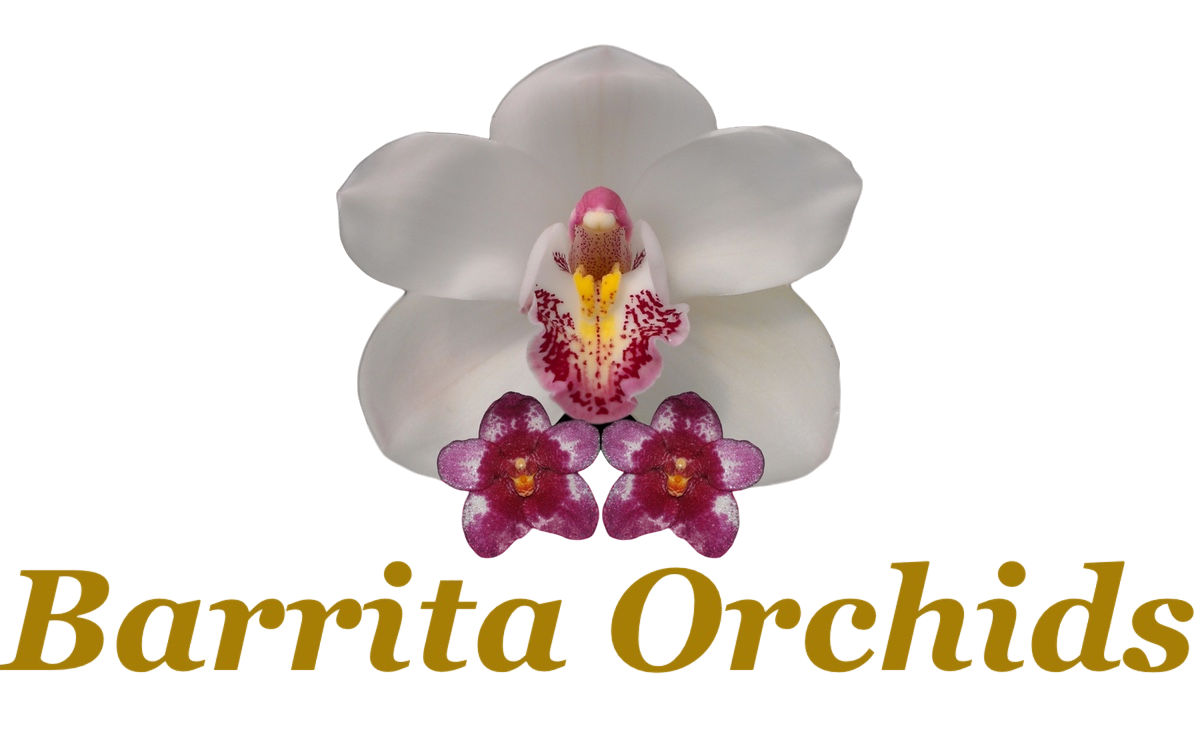Deflasking
Seedling orchids in flasks are a great way to buy plants. You get a look at an unfiltered, unpicked batch of plants. As all the plants are individuals, you will have something that is absolutely, uniquely yours. It is also the cheapest way to buy plants. Even a relatively expensive flask will be cheaper per plant than when potted out. The downside is that deflasking is also the most challenging part of growing orchids for those that have not been through the process.
Getting the plants out. Flasks come in many shapes and sizes. They may be glass or plastic. We use a 500ml jar as our final replate and use a glass cutter to break into the plants. It is possible to hook the plants out, but at this stage, plants can be quite brittle and may break if pulled incorrectly and you don’t want to lose any that way. Depending on the age of the flask and the size of the plants, the roots may be very well developed and entwined. While we rinse the culture media off in the water, we also separate the plants from each other. Again, care is needed as we get them apart. We’re not obsessed with getting all the media off and some left on is ok. After rinsing and separating we keep the plants in water until planting to stop them from dehydrating while waiting to be potted up.
Media. We use two different media for our deflasking. The first is for epiphytes, such as Cattleya, Dendrobium, Vanda, some Sarcochilus and Oncidium we use granulated styrene topped with charcoal. This media dries fast and requires regular watering. The addition of charcoal aids in the retention of nutrients and helps the plants settle into the media.
The second is for terrestrials, such as Cymbidium, Sarcochilus and Zygopetalum. We use Rockwool, perlite, styrene and charcoal. These plants like to have moisture around their roots all the time. It should be noted that some Cymbidiums and Sarcochilus are epiphytic and reference to parentage is important. Both of these media are inorganic which makes the potting-on process much less stressful to the plant, as once there the media does not need freshening or replacing.
Why do we use two media? Our watering is automated and the entire seedling house is watered as one section. This means plants that do not like to have their roots over wet need a media that dries very fast, whereas plants that like wetter roots can use our standard media.
Potting. When I started growing orchids, we planted the freshly deflasked plants into a seedling tray, a plastic tray 30cm x 30cm wide and 4cm deep. The plants were placed into furrows and backfilled. When the tray was filled and watered it was placed on a “hotbed”. A hotbed is a bench of sand with resistance heat cables buried below the surface. The hot bead was in a small glass house with high humidity and was watered often. The plants stayed in this house for a hardening period of up to 6 months, depending on what else was going on in the nursery. Trays and other styles of community pots have the advantage of staying moist longer. Moisture is good for young plants as they have not developed storage reserves. The danger is that if one plant gets a fungal or bacterial infection, it can spread quickly to others. And on a hotbed, with no airflow under the trays, these fungal infections can be a real problem. We encountered this in the early 1990s and as a result, moved to deflasking into single 50mm pots, often referred to as tubes or thumb pots. We also stopped using the hotbed at the same time. Placing plants into a wire tray and placing them onto benches, allowing much better drainage and airflow around the bottom of the pots.
We still use this method today and have tweaked the process to fit the requirements of the different genera we grow and our conditions.
Growing Environment. The flask environment has very high humidity and the plants have access to both moisture and nutrients in the media. Often, the light supplied is artificial and of a lower intensity than in the greenhouse. It is very important that this information is understood. The plants do not experience a dry time in the flask. After deflasking, these conditions need to be replicated. Our seedling house is watered every day. We use water-soluble fertiliser at low concentrations. Using fertiliser at low strength helps uptake by the plant. This high watering regime is tied to our media choices and high-air movement environment. I mentioned the lower-intensity light that flasks are often grown under. With this in mind, we shade the seedling house at 65-70%, an additional 30% to the level of our mature plants. This eases them into the real world with a softer start.
Conclusion. Like any new process deflasking for the first time can be challenging. I purchased a couple of Oncidium flasks early in my career before we had automated watering. We deflasked them on a Friday into styrene and placed them near a heater. When I came in on Monday more than ¾ of them were dead. They had dried out beyond saving. In the end, we were able to save a few plants. It was a costly lesson, but one that I will never forget. Don’t let them dry out. Buying flasks is our preferred way to get new plants and it is very rewarding to see a plant flower that you have raised from such small beginnings.







